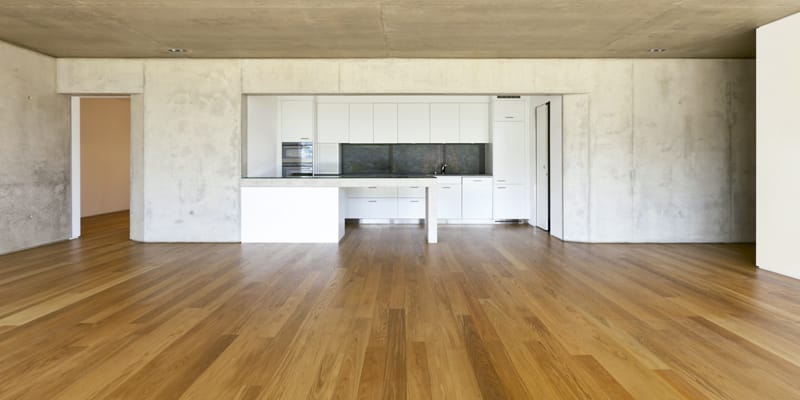Applications
SOIL SYSTEMS

Surface preparation:
It’s the key factor so that the final result of the installed floor was perfect.
To begin, the condition of the pavement must be checked: clean, level, dry and cured, firm and waterproof surface. Depending on the type of soil:
- Cement: it doesn’t have to be easily undone or sharpened, it must be flat and level and free of moisture.
- Terrazzo: free of waxes and without protrusions. In this case, a descaling liquid should be applied.
- Non-porous stoneware: a primer will have to be applied as a bond bridge.
Ground leveling:
The floor must be flat and without protrusions (variations less than 2mm).
Floating platform, flexible floors:
- Primer/bonding bridge: depending on the type of soil, absorbent or non-absorbent, so that the leveling paste is well secured. A bad primer can cause a quick drying of the adhesive, in addition, the adhesive can make lumps when scraping the substrate when we pass the trowel.
- Self-leveling paste: one or several layers if necessary. The quality of the leveling pastes includes directly in a better drying and result before installing.
Solid flooring on battens:
Whether indoor or outdoor, the rails will be the ones that should be well leveled. In the specific case that it’s an outdoor terrace with sand, it’s recommended to apply a layer of cement to compact it well.
Accession:
There’s no single ideal adhesive for all products and installations. The suitable adhesive must be chosen and then applied according to the recommended method, on a suitably ready and prepared support.
Coatings failures:
Ripples, dilations, contractions, appearance of bags or cracks…
- Bad preparation of subsoil
- Defective adhesion
- Humidity
- Bad installation: the heavy roller hasn’t been passed properly
Requirements of a floor adhesive:
- Good initial grip
- A reasonable open time: the drying rate is determined by its composition, the temperature of the air and the support, the amount applied and the porosity of the support
- Excellent end bond strength
- Compatibility with the support and finish
- Ease of application
- Resistance to chemical substances and water
- Anti-displacement properties
- Low toxicity
- Low risk of fire
- Low cost
The ideal tool for the application is a notched trowel.
The space between teeth and their depth allow controlling the amount of adhesive that’s applied. If a correct application isn’t made, we’ll run the risk of failure. Spread adhesive on concrete or cement subsoil, causes the trowel to wear, and that we apply an insufficient amount of adhesive, running the risk that the floor isn’t well adhered.
Not only will we apply a too small amount of adhesive, but the solvent will be absorbed or evaporated sooner, increasing the chances that we’ll have a problem if we also take too long place the material.
Most adhesives begin to cure as soon as they come into contact with air and begin to form a film on their surface.
Once the material is placed, when pressing the pavement on the adhesive, the ridges left by the trowel are chamfered and the wet adhesive fills the spaces between ridges and clings to the backing of the lining.
If the crest isn’t the correct size, there may not be enough fresh adhesive to grip the lines. During the adhesive extension movement, we must keep the trowel at an angle of 60º. If we put it too flat, the crest of adhesive will be lower than necessary.
We’ll need a heavy roller (68kg) of 3 or 4 parts that we’ll pass along and across if necessary. With this operation we’ll ensure that the coating is firmly pressed against the adhesive, removing possible air bubbles towards the joints and edges.
Where the heavy roller doesn’t reach, we’ll use a hammer or a pressure hammer. Most of the floor failures begin at the edges and at the joints, so these parts must be especially well pressed against the adhesive.
WHAT PRODUCTS TO CHOOSE DEPENDING THE SOIL TYPE
The range of Quilosa flooring products includes primers, leveling pastes and adhesives. It has been developed in response to the requirements of the most demanding professional users, combining quality, reliability and application comfort.
Our priority objective is the satisfaction of our customers through the highest quality of products and specialized attention.
The most popular types of floors include modern, traditional and sports floors. And for each type, some products or others are used:
- Modern floors are characterized by the final layers without varnish. In this type of flooring, Quilosa products offer a combinations of: Primer, Quilosa WB-290, the Quilosa LC-410 self-leveling paste, the Quilosa BH 210 adhesive wood hybrid .
- Traditional floor are mainly installed using parquet strips and mosaic parquet. The products we recommend are: first, Primer Quilosa WB-290, then the use of a self-leveling paste such as our Quilosa LC-735 , Quilosa BP-385 .wood and flexible flooring

